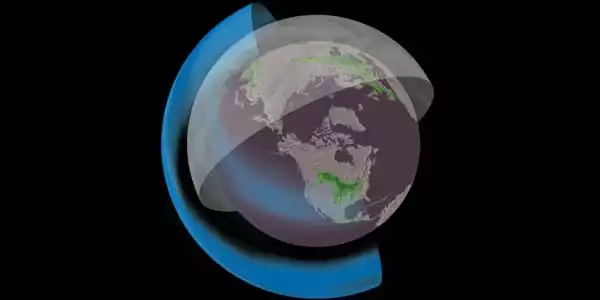We’re all seeing less of the Sun. Scientists studying five decades of sunlight data have come to the disturbing conclusion that the amount of solar energy reaching the Earth’s surface has been steadily decreasing. In an ironic twist, the decrease in sunlight may indicate that global warming poses a far greater threat to society than previously thought.
Researchers used decades of measurements of earthshine – the light reflected from Earth that illuminates the surface of the Moon – to discover that Earth’s reflectance has decreased significantly over the last two decades. The Earth now reflects about half a watt less light per square meter than it did 20 years ago, with the majority of the reduction occurring in the last three years.
According to a new study, the brightness of the Earth has decreased due to warming ocean waters. According to a new study published in the AGU journal Geophysical Research Letters, the Earth is now reflecting about half a watt less light per square meter than it did 20 years ago, with the majority of the drop occurring in the last three years of earthshine data.
That equates to a 0.5 percent decrease in the Earth’s reflectance. The Earth reflects roughly 30% of the sunlight that falls on it.
Researchers used decades of measurements of earthshine — the light reflected from Earth that illuminates the surface of the Moon — as well as satellite measurements to find that there has been a significant drop in Earth’s reflectance, or albedo, over the past two decades.
“The albedo drop was such a surprise to us when we analyzed the last three years of data after 17 years of nearly flat albedo,” said Philip Goode, a researcher at New Jersey Institute of Technology and the study’s lead author, referring to earthshine data collected by the Big Bear Solar Observatory in Southern California from 1998 to 2017. When the most recent data was combined with previous years, the dimming trend became clear.
The net sunlight reaching the Earth is affected by two factors: the brightness of the Sun and the reflectivity of the planet. The researchers observed changes in Earth’s albedo that did not correlate with periodic changes in the Sun’s brightness, implying that changes in Earth’s reflectiveness are caused by something on the Earth.

According to satellite measurements taken as part of NASA’s Clouds and the Earth’s Radiant Energy System (CERES) project, there has been a decrease in the amount of bright, reflective low-lying clouds over the eastern Pacific Ocean in recent years.
That’s the same area, off the west coasts of North and South America, where rising sea surface temperatures have been observed as a result of the reversal of a climatic condition known as the Pacific Decadal Oscillation, which is thought to be linked to global climate change.
Many scientists believe that today’s climate is less sensitive to the effects of carbon dioxide than it was, say, during the ice age, when a similar increase in CO2 resulted in a 6°C temperature rise. However, it now appears that the warming caused by greenhouse gases has been offset by a significant cooling effect caused by dimming – in effect, two of our pollutants have been canceling each other out. This implies that the climate may be more sensitive to the greenhouse effect than previously thought.
The Earth’s dimming can also be seen in terms of how much more solar energy is captured by the Earth’s climate system. Once this significant additional solar energy has entered the Earth’s atmosphere and oceans, it may contribute to global warming because the extra sunlight is of the same magnitude as the total anthropogenic climate forcing over the last two decades.
“It’s actually quite troubling,” said Edward Schwieterman, a planetary scientist at the University of California, Riverside, who was not involved in the new study. Many scientists had hoped for a long time that a warmer Earth would result in more clouds and higher albedo, which would then help to moderate warming and balance the climate system, he said. “However, this demonstrates the inverse is true.”
Even the most pessimistic global warming forecasts may now need to be drastically revised upwards. That means a temperature rise of 10°C by 2100 is possible, giving the UK a climate similar to that of North Africa and rendering much of the world uninhabitable. That is, unless we act quickly to reduce our greenhouse gas emissions.
















